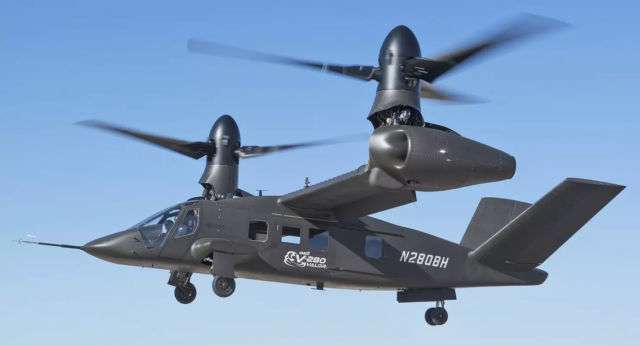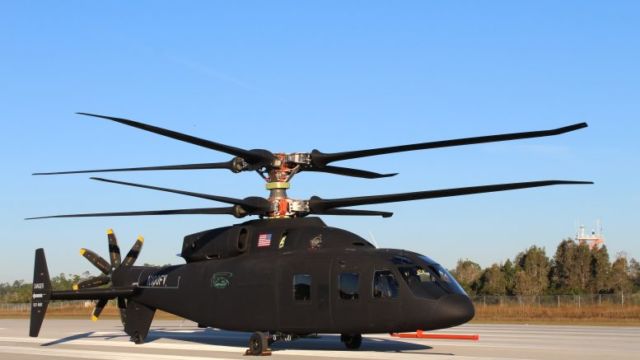
Forget Airwolf: One of these is the Army’s next assault “helicopter”
The Sikorsky UH-60 Black Hawk and its many variants have been the backbone of the US Army’s helicopter force for decades. Designed during the Army’s last major helicopter procurement push in the 1980s, the Black Hawk now flies in some form in all of the military services. But its range and speed have become limiting factors in the Army’s airborne assault operations. And to add to the problem, the Army lacks a scout helicopter that meets the demands of deployment overseas. The Eurocopter UH-72 Lakota isn’t combat-capable, so AH-64 Apaches have had to play the role of armed scouts with the assistance of drones.
As a result, the Army has two separate helicopter procurement programs running for the first time since the Black Hawk and Apache were in the pipeline. The two programs, which emerged from the “capability sets” of the Army’s Future Vertical Lift program, seek Black Hawk and Kiowa replacements that are “optionally manned”—meaning that they can fly with or without an aircrew—as well as being easier to maintain and fly than their predecessors.
The Black Hawk replacement competition, which the Army is now calling the Future Long Range Assault Aircraft program, is the most fully formed of the two thus far, with two contenders already in prototype phase. The goal of the program is an aircraft that is faster, longer ranged, more lethally armed, stealthier, more rugged, and more agile than the Black Hawk, while at the same time being more intuitive to fly. And it should be affordable. The speed target for the competing designs is around 280 knots (322 miles per hour, or 518 kilometers per hour).
V for Valor
Textron’s Bell unit has already gotten its contender in the air. Bell’s V-280 Valor, an evolution of the V-22 Osprey tilt-rotor, has been in flight testing for over a year. In January, the prototype V-280 reached 280 knots in flight. And Bell officials said that they expect the Valor to only get faster. The V-280 is expected to have a combat range of 920 miles (1480km)—nearly three times that of the Black Hawk.
The advantage of tilt-rotor aircraft is that they combine the vertical take-off and landing capabilities of a helicopter with the flight characteristics of an airplane. And Bell has the advantage of having had the Osprey to help it mature the technology. Early on, the Osprey—flown by the Marine Corps and Navy—was plagued with accidents and maintenance issues. But it has since become much more reliable and is now being pressed into new missions by the Navy, including heavy lift for carrier cargo deliveries.
There are reasons the Osprey isn’t an Army favorite. One is that its entire wings—including the turbine engines that power the rotors—rotate, making the craft more expensive and complex and making landing zones more jet-blasted and dusty. The Valor fixes some of the challenges of the Osprey by tilting only its rotors and not the whole turbine engine assembly—meaning it will kick up less dust and not set fire to grassy landing zones. It’s also lighter and potentially cheaper than the V-22.
Locking X foils in attack position
Bell’s competitor in the competition is the Sikorsky-Boeing SB-1 Defiant. The Defiant is an evolution of the X-2 experimental helicopter and the S-97 Raider, both of which used rotors based on what Sikorsky calls the Advancing Blade Concept, a design that uses contra-rotating rigid rotors for lift and a pusher propeller for much of the thrust. The design of the rigid propellers helps get past the aerodynamic issues that have limited helicopter speeds in the past.
The X-2, the first Advancing Blade Concept helicopter, unofficially broke the speed record for rotary-wing aircraft in 2010 by flying at 250 knots (287 miles per hour). The Raider, developed internally by Sikorsky, was originally targeted at the Army’s Kiowa replacement effort—now the Future Attack Reconnaissance Aircraft program. It fits within the same footprint as the Kiowa but can carry up to six troops in addition to the pilot and co-pilot.
The Defiant has yet to fly—currently, its prototype is in ground testing. But the Raider has already flown and has reached cruising speeds of over 200 knots (by comparison, the Black Hawk’s maximum speed is 159 knots, or 183 miles per hour.) When in level flight, the Raider behaves more like a commercial jet than a helicopter: the collective control locks in at its most efficient position, and the pilot flies the helicopter exclusively with the cyclic stick. A control on the stick allows the pilot to control the pitch of the rear propeller and manipulate speed in level flight—or to fly the aircraft backward with negative pitch. And the combination of rigid rotors and rear thrust makes the Raider much more nimble than other helicopters.
The Raider is designed to withstand sustained forces of up to three times the Earth’s gravity in maneuvering—think Airwolf, without the 1980s soundtrack, fantastical Mach 1 speeds, and all-you-can-fire missiles.
Sikorsky is working on an updated Raider-like design for the Future Attack Reconnaissance Aircraft program that meets the Army’s new specifications. The Army is seeking an aircraft that has a maximum footprint of 40 feet in diameter—a bit larger than the Raider’s 34-foot main rotor diameter. Bell will likely pitch a design based on the Valor for the reconnaissance program as well, but the company has not shared any details of its bid as of yet.
Listing image by Textron Bell





